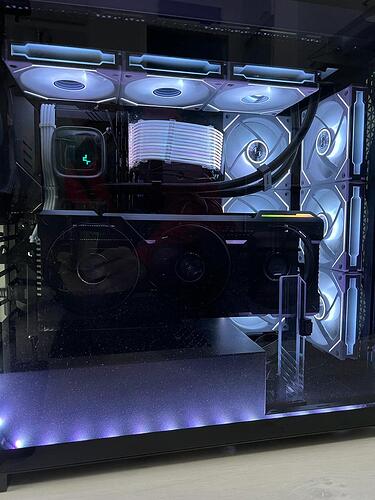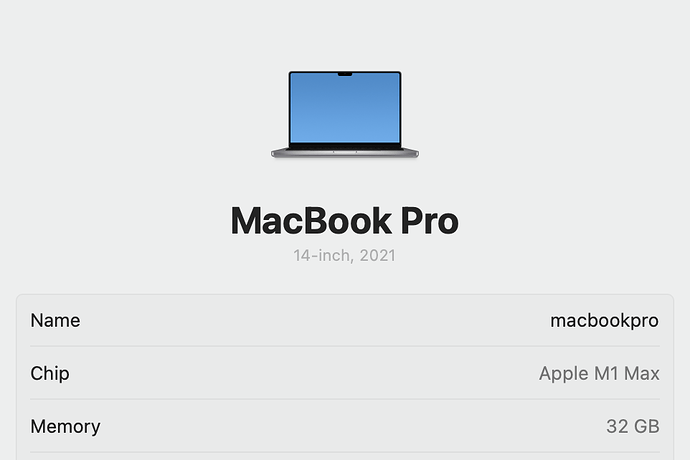I will order it right now…
Finally, at least for the time being, I got a stable P-core ratio x55 and E x45. In addition, with afterburner, power limits to the maximum and through the oc scanner. Now the screen doesn’t freeze at all with sinc-Ll and for the sake of heat, you could have tightened it up as much as you wanted, but cinebench always ended in the middle, so there was still a lot left to be done…
And I ran about ten tests in a row, that’s why the minimum temperatures are so big ![]()
@jussi_laako How much does tightening up memories help? I have standard ddr5 cl36 6000mzh and I would think that cl32 6800mzh would be achievable…
I don’t have any number data to offer, but it should make a difference with these big filters that are not going to fit in the L3 cache. But if you run filters on the GPU, then only modulators are left on the CPU and these have pretty small memory footprint and fit in the caches - which is very much necessary for the higher output rates.
Thank you still!
I just ran a few runs, the 13900k hit 96c max a few times With a max of 6ghz but never throttled. Scored 39600.
Hqplayer doesn’t push the chip as hard as cinebench. Well it does but not the same way.
If you can get your temps and voltage stable, you could try taking 1 off the avx limiter which may help.
I’m trying to remember the memory specs, I think they were 6000 32-38-38-96. I just have it set to the ASUS XMPII Settings.
The last one lasted a long time… I ordered the Kingston Renegade 64gb 6000mzh cl32 package and then at the weekend I will seal the radiator ![]()
With ddr5 I usually check the manufacturers site of the motherboard to make sure kits are known to be compatible. I had to return the first kit for my board as I got one of the numbers wrong and the chips were not listed as compatible.
Those work with my AsRock Z790 pg-itx.
Remind us of all final specs and models?
MB? CPU? GPU? PSU? Cooling?
AsRock Z790 PG ITX-TB4
Intel i7-13700K @ 5.5/4.5ghz
Corsair RM850x
Kingston Renegade 64gb cl32 6000mzh
Asus tuf oc rtx4080
Deepcool LS720 with 6× Lian Li UNI SL-INF FAN
Case fans in front 6× Lian Li UNI SL-INF
Case fan behind Noctua 140mm
Case Corsair 5000D AIRFLOW
That’s simply not correct: in terms of throughput, any of my M1 systems (including a base Mac Mini M1) offer, per core, at least 50% greater throughput on both integer and floating point linpack than the AMD 3900X I have. Yet the AMD manages DSD512 just fine, whilst the Mx machines don’t. My suspicion therefore falls on whatever cross-platform SDK you’re using, where I suspect that it’s doing a poor job of mapping instruction and buffers.
Ahh, don’t look at such synthetic benchmarks. They rarely correspond to real world application performance.
What matters here is how many math instructions can be computed per output sample, and that is relative to the clock frequency as well, how many CPU clock cycles there are per output sample.
There’s absolutely no cross-platform SDK involved here. It is native on all platforms.
On Intel/AMD there’s heavy reliance on AVX2 instruction set that can process 256-bit vector operations on all CPU cores at the CPU clock frequency (now at 6+ GHz). On ARM there’s for example NEON, but it is 128-bit and not as capable as AVX2, more like SSE4.2.
So combination of smaller vector operations and about half the clock speed makes difference.
M1/M2Pro/Max/Ultra (not the base model) has advantage of higher memory bandwidth due to stacked design. Of course negative side is that you cannot add more RAM later. However, they have smaller caches than Intel/AMD which also matters.
I think their philosophy was that, given the close memory coupling, it didn’t need such a comprehensive cache. Your point about AVX2 is good though - and where a CISC architecture can provide a computational path that effective hard codes for a given application. Not using synthetic BMs, BTW - I used to lecture on RISC architectures in the early days and run an AI company that very effectively uses Mx architecture systems for CPU-intensive work.
By the way, my MacBook Pro with M1Max can run DSD512 with ASDM7EC-super / ASDM7EC-super 512+fs and the default filters (poly-sinc-gauss-long/poly-sinc-gauss-hires-lp).
For good performance you need at least six performance cores for stereo output.
That’s useful to know. But here’s the strange thing - I’ve just installed HQP 5 on my MacBook Pro Max, which is probably the same spec as yours (10 CPU core, of which 8 are Performance, plus 32 core GPU FWIW). But it simply won’t run the spec you list above, or anything that’s DSD512. My playout chain in that case is Roonserver on M1 Mac Mini [wired LAN]->HQP5 on M1 Pro Max [via 1Gb+ Wifi] ->Gustard A26 [wired LAN]->amp chain. I’ll try it out with a TB4/Ethernet hub tomorrow to see if that makes a difference, but I’m not sure why this is happening, on an otherwise idle system.
Yes, with 8 performance cores and two efficiency cores. M1/M2 has about 80 GB/s RAM speed, M1Pro has 200 GB/s RAM speed, M1Max has 400 GB/s RAM speed and M1Ultra has 800 GB/s RAM speed. So the differences between the CPUs are rather large. This is due to how RAM is connected to the CPU blocks.
You need to use wired ethernet, for example through the Belkin adapter Apple is offering, and it will likely work fine. That is what I do.
This laptop has buggy WiFi that has totally horrible latency, you can search the internet about it. According to Apple the solution is to turn off location services which interferes with the WiFi. However, that has naturally other implications… You can see the lag when you ssh over WiFi to some other computer and for example keep some key pressed, you can see the result is really jerky.
I thought that might be the case - I’ve had multiple of the well documented wifi issues with this machine, but hadn’t got around to working out the b/w needed for HQP/DSD512. Putting it on the wired network this evening as a temp measure - this is my working machine, so if that works out, I’ll swap my M1 Mac Mini media/HQP server for an M2 Mini Pro.




